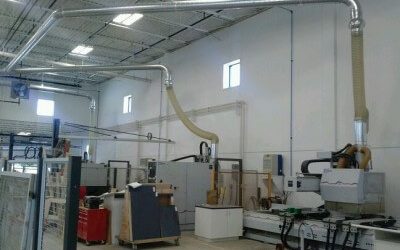Woodworking is a craft that combines skill, passion, and precision, but it also presents unique safety and health challenges. Fine wood dust generated during sawing, sanding, and routing can pose significant risks to both air quality and overall shop safety. When American woodworkers search for effective ways to address these hazards, they often look for solutions through Dust Collection systems. Understanding how these systems work and their benefits can help create a healthier, more productive workspace.
The Importance of Clean Air in Woodworking Shops
Maintaining clean air in a woodworking shop is not just about comfort—it’s a critical safety measure. Fine wood dust particles can linger in the air, leading to respiratory issues, allergic reactions, and even long-term health problems like asthma or chronic bronchitis. Additionally, the accumulation of dust on surfaces increases the risk of fire and machinery malfunctions. Implementing a reliable dust collection system is essential for reducing airborne particles and keeping your workspace safe.
Key Benefits of Dust Collection Solutions
Modern dust collection solutions offer several advantages for American woodworkers:
- Improved Air Quality: These systems efficiently capture dust at the source, preventing it from becoming airborne and contaminating the shop environment.
- Enhanced Safety: By minimizing the buildup of combustible dust, the risk of fire hazards is significantly reduced.
- Health Protection: Reducing exposure to fine dust helps protect woodworkers from respiratory issues and long-term health concerns.
- Machine Longevity: Dust can clog and damage power tools over time. Effective collection systems help extend the life of equipment by keeping internal components clean.
- Compliance with Regulations: Many local and federal regulations require shops to control dust emissions, making collection systems important for legal compliance.
Types of Dust Collection Systems
Selecting the right dust collection solution depends on the size of your shop, the types of tools you use, and your specific workflow. Common options include:
- Single-Stage Collectors: Ideal for small home workshops, these systems use a simple filter to trap dust and debris.
- Two-Stage (Cyclone) Collectors: These units separate larger debris before filtering fine dust, making them suitable for medium to large shops with higher dust volumes.
- Centralized Systems: Designed for professional or commercial shops, these systems connect multiple machines to a single, powerful collector for efficient, shop-wide dust control.
Best Practices for Maximizing Dust Collection Efficiency
To get the most out of your dust collection system, consider the following tips:
- Regularly inspect and clean filters to maintain optimal airflow.
- Use properly sized ductwork to minimize air resistance and maximize suction.
- Install blast gates to control airflow to specific machines as needed.
- Ensure all machines are properly connected and sealed to prevent leaks.
- Consider supplementing your main system with portable air filters for added protection.
Creating a Safer, Healthier Shop Environment
Investing in a well-designed dust collection system is a proactive step toward protecting your health, your equipment, and your shop. By addressing airborne dust at its source and following best practices for system maintenance, American woodworkers can enjoy a cleaner, safer, and more productive workspace. Whether you’re a hobbyist or a professional, prioritizing air quality and safety ensures that your passion for woodworking can thrive for years to come.

